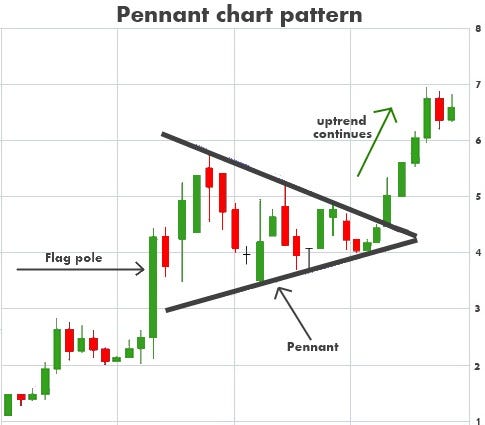20 New Pieces Of Advice For Picking Ai Stock Trading App Websites
20 New Pieces Of Advice For Picking Ai Stock Trading App Websites
Blog Article
Top 10 Tips To Evaluate The Strategy Customization Of Ai Stock Predicting/Analyzing Trading Platforms
AI trading platforms that can predict or analyze stocks are known for their capacity to modify strategies that meet the needs of their users. This allows them to adapt to specific trading objectives and conditions, such as the risk tolerance. Platforms with powerful customization features will increase the efficiency of your trading. Below are the top 10 suggestions to evaluate the ability to customize your strategy on these platforms:
1. Evaluate Pre-Built Strategy Templates
Variety of templates. Check whether the platform comes with a wide selection of built-in strategies that are suitable for different trading types (e.g. swing trading, day trading or long-term investing).
Usefulness: Determine the ease with which these templates could be modified to meet your requirements.
Performance history: See whether the platform has historical performance statistics on the an already-built strategy.
2. Create a Custom Strategy
Drag-and-drop tools: Choose platforms with drag-and-drop interfaces that allow you to easily create personalized strategies.
Coding options: For advanced users make sure the platform allows custom coding using a proprietary scripting language (e.g. Python, R).
Flexibility - Ensure that the platform you select allows you to set rules for entry and exit, as well as parameters to manage risk, as well as other essential elements of your strategic plan.
3. Check for Backtesting Capabilities
Historical data. Verify whether the platform is able to provide enough historical data to test your strategy back.
Customizable Parameters: You should be able to adjust parameters, including indicators and timeframes during backtesting.
Performance metrics: See whether the platform has precise measurement of performance (e.g., win rate, Sharpe ratio drawdown) for strategies that have been tested back.
4. Evaluate Real-Time Strategy Testing
Paper trading: Check that the platform provides the option of paper trading as well as simulation mode for testing strategies in real time, without taking risks with your capital.
Live testing: See whether you are able to run strategies on live markets using very little capital to test their effectiveness.
Real-time adjustments: Check whether you are able to tweak strategies in real-time based on market conditions.
5. Integrate integration with technical indicators
Verify if there's an indicator library.
Custom indicators: Make sure you are able to import or design custom indicators for your strategies.
Check that the platform permits you to combine multiple indicators into complex strategies.
6. Check for Risk Management Tools
Stop-loss/take-profit: Ensure the platform allows you to set stop-loss and take-profit levels within your strategies.
Position sizing: Determine if you can define position sizing rules (e.g., fixed amount, percentage of portfolio) to reduce risk.
Risk-reward: Find out if your platform permits you to set risk-reward for each strategy or trade.
7. Evaluate Multi-Asset Strategy Support
Asset classes: Make sure that the platform offers strategies for multiple asset classes.
Cross-asset strategies : You can make strategies that involve various asset types (e.g. pair trading or hedges).
Market coverage: Make sure the platform you are interested in covers the markets that are of interest to you (e.g. US or international, copyright).
8. Assess the Automation and Execution
Automated Trading: Make sure that the platform has the ability to automate the execution of strategies based on rules predefined.
Types of orders: Ensure that the platform can execute various types of orders including stop, limit, market and stop.
Check for latency: Make sure that the platform is able to allow trades to be executed with minimal delay. This is particularly important when it comes to high-frequency strategies.
9. Check for strategy optimization tools
Parameter optimization: Make sure the platform provides tools to optimize the parameters of your strategy (e.g. grid search or genetic algorithm).
Machine learning integration: Determine whether the platform incorporates machine learning to refine and improve strategies.
Analysis of scenarios: Check whether the platform permits testing strategies in different market conditions (e.g., bear, bull or volatile).
10. Review Community Support and Feedback from Users
User feedback Research user feedback to evaluate the effectiveness of the platform in the development of a customized the strategy.
Community forums: See whether the platform hosts an active community where users are able to discuss and discuss customized strategies.
Support resources: Check whether the platform offers tutorials, documentation, as well as webinars that can assist users in creating and optimizing strategies.
Bonus Tips:
Trial period: Take advantage of the demo or trial version for free to try out the platform's customization features.
Scalability - Ensure that the platform you select can adapt to your changing trading strategies.
Customer support: Determine whether the platform is able to provide support for issues related to strategy and queries.
These tips will help you analyze the various customization options available to AI trading platforms that can predict or analyze stocks. So you'll be able choose one that matches your objectives in trading and lets you improve and implement strategies. A platform with robust customization capabilities can allow you to adjust to changing market conditions and boost the performance of your trading. View the best click this about ai stock market for site info including best stock analysis app, ai stocks, ai copyright trading bot, best ai trading software, copyright advisor, stock ai, ai investing app, ai options trading, trading ai bot, ai chart analysis and more.
Top 10 Tips For Evaluating The Trial And Flexibility Of Ai Platform For Analyzing And Predicting Stocks
Before signing up for long-term contracts It is important to assess the options for trial and the potential of AI-driven prediction as well as trading platforms. Here are the top ten tips to consider these elements.
1. Free Trial Availability
Tip - Check to see whether the platform allows users to test its features for free.
Why: The free trial is an excellent way to test out the platform and evaluate the platform without taking on any financial risk.
2. Trial Duration and Limitations
Tip: Check out the trial duration and limitations (e.g. limited features, data access restrictions).
Why: Understanding the constraints of a test will help you determine if an exhaustive assessment is offered.
3. No-Credit-Card Trials
There are free trials available by searching for those which do not require you to provide your credit card information.
Why? This reduces unexpected charges and simplifies opting out.
4. Flexible Subscription Plans
Tip. Check to see whether the platform has the option of a flexible subscription (e.g. annual or quarterly, monthly).
The reason: Flexible plans allow you to customize your commitment according to your budget and needs.
5. Customizable Features
Find out if you can customize features such as alerts or risk levels.
Why: Customization allows for the platform’s adaptation to your individual requirements and preferences in terms of trading.
6. The ease of cancellation
Tip: Consider how simple it is to cancel, degrade or upgrade your subscription.
Why: A hassle-free cancellation procedure ensures that you're never stuck with a plan that isn't working for you.
7. Money-Back Guarantee
Check out platforms that offer 30-day money-back assurance.
The reason: It will give you an additional security net in the event that the platform not meet your expectations.
8. You can access all features during the trial period
Make sure whether you have access to all the features in the trial version, not just a limited edition.
You can make an informed choice by evaluating the whole functionality.
9. Customer Support During the Trial
Tip: Evaluate the level of customer service provided during the trial period.
Why: Reliable customer support allows you to resolve problems and maximize your trial experience.
10. After-Trial Feedback Mechanism
Check whether the platform asks for feedback from its users following the test to improve the quality of its service.
Why: A platform that is based on user feedback is more likely to change and satisfy user requirements.
Bonus Tip: Scalability Options
The platform should be able to scale up with your growing trading activity and offer you more expensive plans and/or additional features.
If you carefully consider these options for testing and flexibility, you can make a well-informed decision on whether you should use an AI stock prediction trading platform is right for you. Check out the top rated free ai trading bot for site info including canadian ai stocks, ai investing app, chart analysis ai, stock analysis app, ai stock price prediction, ai stock, ai investing app, ai investment advisor, ai trading tools, ai stock picks and more.